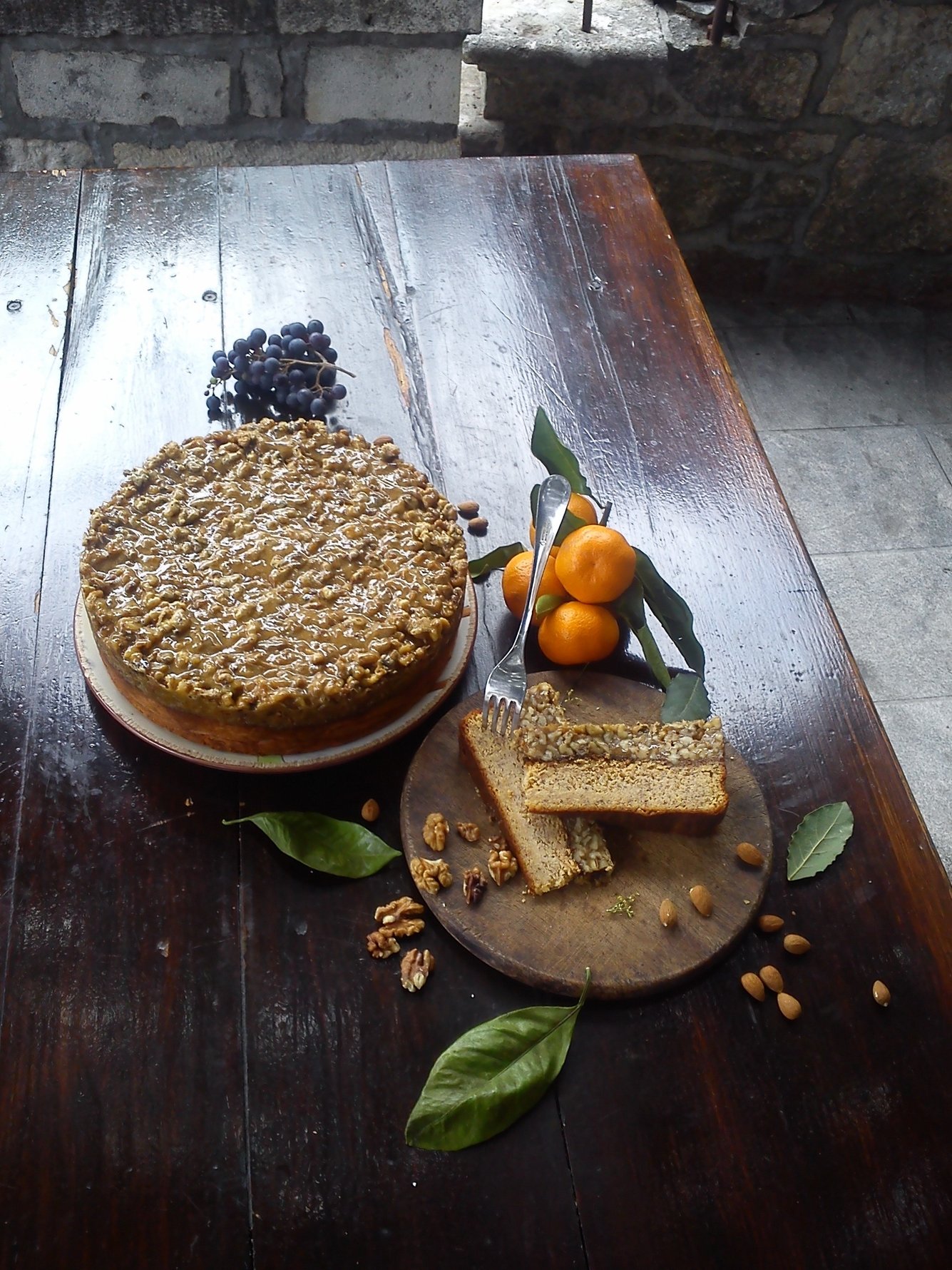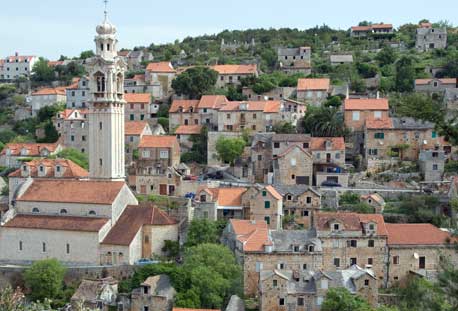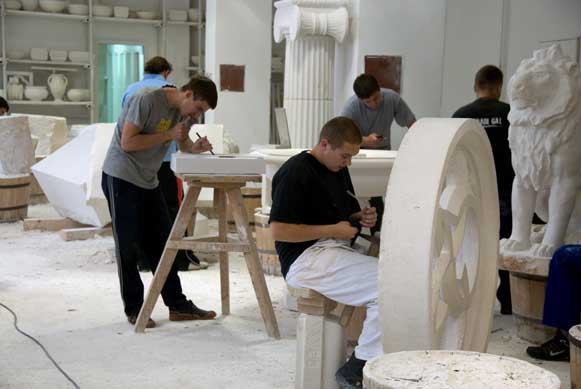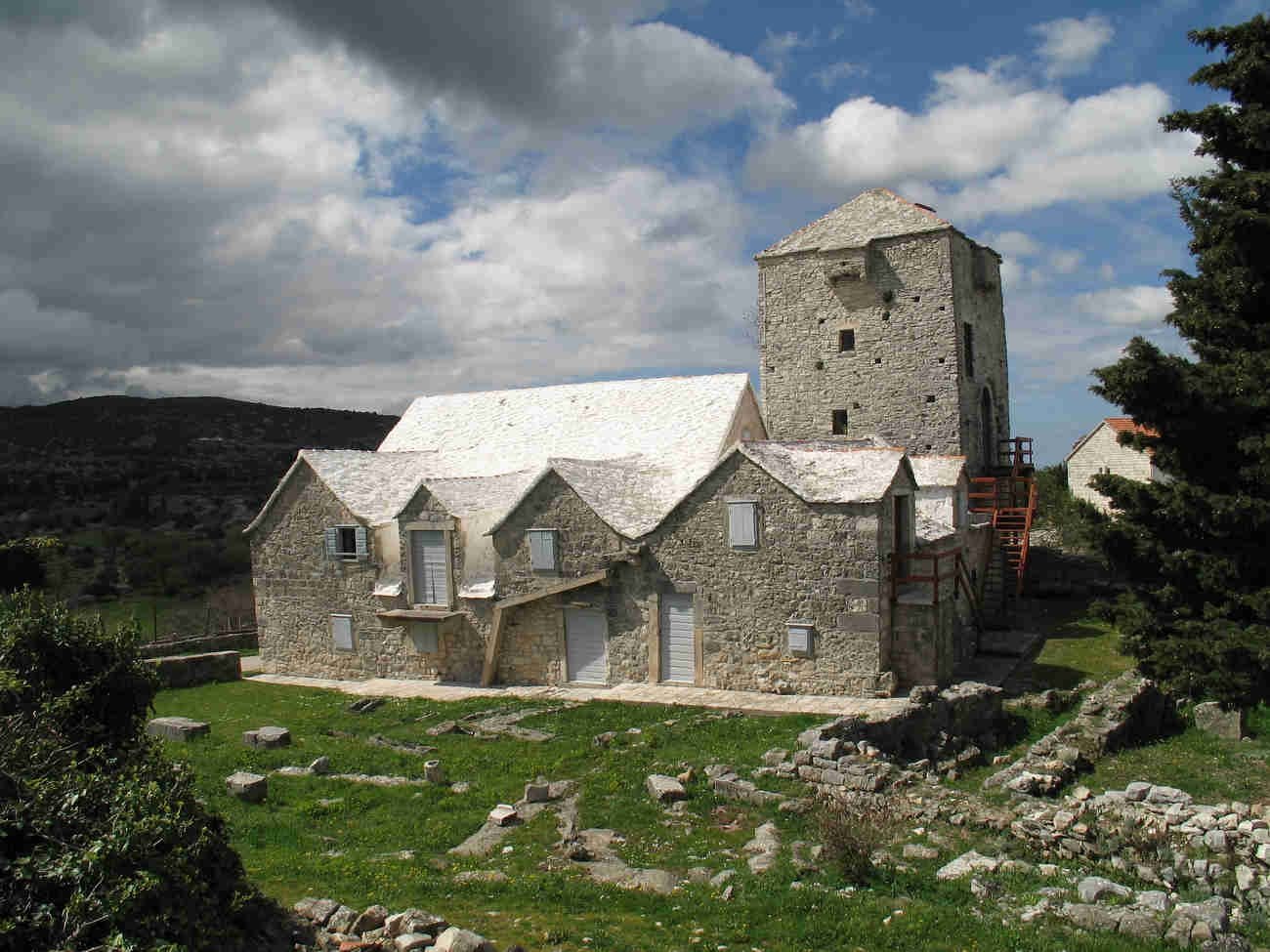Five gem of the Island of Brač
Croatian islands are dubbed as jewels - each one for itself! And you’ll find that you always come back to them. This time round, we will tell the stories of five unforgettable places from the island of Brač. Ložišća with its beautiful architecture and bell tower made by the great sculptor Ivan Rendić, Dol with its wonderful architecture and unforgettable gastronomic delight in the crunchy hrapčuša cake, Škrip with the Museum of the Island of Brač, Pučišća with its Stonemason's School and Povlja with the Basilica of St John (Sv. Ivan)!
Dol
Dol is an iconic stone village. Its houses are dug into the rock, serried in rows so that they appear to be growing up the hillside, blending in with the caves that overhang them and with the colours of the landscape. Set in a fertile valley, Dol is still a farming community that offers you the chance to enjoy deep peace and the contentment of home cooking using the freshest local ingredients.
Deep in the rocky karst landscape, natural freshwater accumulations were discovered close to Dol which for centuries provided drinking water for Postira, Supetar and Sutivan. When a water main was brought over from the mainland forty years ago, this local water source was locked up by the water company. Opened in April 2010 for exploration, a small shrimp-like creature was found - a new species endemic to the island.
Around Dol are a number of hilltop chapels. The oldest is St Michaels (Sv Mihalj). Surrounded by sarcophagi, the chapel’s door itself is made of a sarcophagus with the base sawn off. It’s easy to understand why the Romans felt this high spot, brooding over its surroundings and attracting thunderbolts, was an appropriate resting place for their dead. Today, with the bleating of multitude sheep, the scent of wild herbs and the wind all around, you can still feel a special mystical atmosphere.
Hrapačuša
The village of Dol has its very own living legend – a lady named Barica who is proud holder of the title of World Champion in the making of Hrapačuša cake. Some may point out that Hrapačuša is only made on Brač and in particular in Dol and that this is therefore no achievement at all, but we defy anyone to taste the cake of Barica and tell us that she is not among the greats of this planet, or even neighbouring galaxies, in the art of making cake. Her Hrapačuša is a crescendo of nuts, lemon, caramelised sugar and egg yolk, a calorific atom bomb that induces an intense sugar rush and has been named “Dol Viagra” with good reason. Try Barica’s award-winning cake in Konoba Toni or at island gastronomy festivals.

Postira Tourist Board Archive
Ložišća
We hardly dare tell you what awaits you when you set eyes on Ložišća for the first time, for fear of spoiling this spellbinding moment. However, since our job is to provide tourists with information we’ll just have to risk it…

Built on the crest of a hilltop and cascading into a valley, the stone village is spectacular enough in itself. But rising from its heart like a delicate stone lily is an ornate bell tower. It’s certainly the most ornate and most spectacular campanile on the island, and perhaps for miles around.
Commissioned by Archduke Franz Ferdinand, the bell tower was designed in 1889 by Brač-born Ivan Rendić, one of the leading Croatian sculptors of all time. Rendić was reputedly paid in alcohol – the exact amount is debated, was it 25 litres or 50? What we do know is that it was the fine dessert wine prošek as drunk at the imperial court in Vienna
Ložišća is a rare example of rural Mediterranean architecture absolutely untouched by modern life and in a spectacular setting.
Povlja
Approaching Povlja by road, the first sight of the village clustered on a headland and framed by the Biokovo mountains across the channel is rather special. Povlja overlooks the bustling mainland resorts of the Makarska Riviera, which is one reason why the village is a popular destination for day-trippers. The other is the presence of some first-class monuments. Povlja’s parish church is built next to the extensive ruins of a large basilica from the 5th to 6th centuries and the remains of a Benedictine monastery with a defensive tower.

Povlja is also famous for two historic documents: the Povlja Charter, written on parchment, documents land possessed by the monastery, a very early example of this type of legal document and the first example on the island written in the bosančica script; and the Povlja Lintel, engraved in the same script by a famous stonemason named Radonja memorialising his contribution to the church, and that of a prince named Brečko who donated land for the building of the church. The original is preserved in the Archaeological Museum in Split, and a copy is on display at the Native Museum in Škrip.
Pučišča
Pučišča, the second largest town on Brač, grew up in the 15th century when pirate attacks on the coast ceased, emboldening the islanders to descend to the shore. The town has been lent a colourful air from a mix of architecture. Peasant cottages perch up the hill while the homes of the wealthy and fine public buildings line the waterfront. Due to the ongoing threat of Turkish invasion from the mainland, thirteen forts were built to protect the town. Some of these are still standing today.

Due to the closeness of the stone quarries, and perhaps out of a contemplative intimacy enforced by the need to stay close to the protective forts, a rich cultural life developed in Pučišča. Many writers found their voice here, and the town is the home of stonemasonry and sculpture on the island possessing the only secondary school specialising in stonemasonry in Europe. There is an annual summer music school in the town, and the town was a centre for the development of the Croatian language. Under the loggia of the renaissance palace next to the Ciprijan Žuvetić fort is the door leading to the first Croatian language reading room on the island. In the summer months a festival of culture encompasses everything from classical music, jazz and pop concerts to book readings, theatre and folklore performances.
Apart from the school of stonemasonry, the parish church of St Jerome with its Gothic façade and attractive red cupola is worth visiting. Next to the parish church is the red town hall building, guarded by two stone lions. The rectory houses the Povlja Charter, an important historical document (see Povlja). The cemetery church of the Blessed Virgin Mary has an impressive relief of the Madonna and Child. A 16th century waterfront palace belonging to the Dešković family now serves as a luxurious small hotel. Brač sculptor Branislav Dešković was born there; you can see his works in the art gallery named in his honour in Bol.
Škrip
Apart from the tiny shepherd’s hamlets, Škrip is the oldest settlement on Brač and is a rich archaeological and cultural depository, a testament to human habitation from Illyrian times to the present day. The name comes from the Latin word “scrupus” meaning the large rough stones mined in the nearby quarries from which the place is built. Škrip has a wild, primeval beauty juxtaposed with beautifully preserved peasant architecture with snow-white roofs evoking a strong sense of nostalgia. Brač’s Native Museum is here – a visit is an absolute must if you want to better understand the island past and present.

Building in Škrip started in earnest during Illyrian times, as the remains of massive defensive walls confirm. It is thought that their purpose was to keep the Greeks out: the Illyrians happily traded with the Greeks, but fiercely defended their independence. Then followed the Romans, who in their imperial confidence felt little need for fortifications and so expressed their spiritual side instead. There is a mausoleum in the base of the tower in the museum complex, there are countless sarcophagi in the area (so much so that they are used as domestic receptacles), there is an inscription in the graveyars, there are sacrificial monuments and it is believed that a Roman temple lies under the graveyard. The pond hollowed into the rock by the cemetery is just one of many that the Romans made on Brač to ensure a supply of water.

Following the arrival of the Croatians, apart from the peasant homesteads two stately homes were built in the 16th century: the complex around the Radojković tower (the latter in fact being made up of layers from all three eras) and the massive Cerinić fort. These fortifications served to defend Škrip during the Ottoman-Venetian wars. The parish church of St Helen of the Cross was built at the turn of the 19th century. In the cemetery behind are two small churches, the basilica of the Holy Ghost and the chapel of St John (in ruins). The edge of the cemetery affords a spectacular view over the karst hills. In this eerie, windy spot you feel as if you are somewhere very ancient, a million miles from the ice cream parlours and arcade games of the beach resorts.





Comments